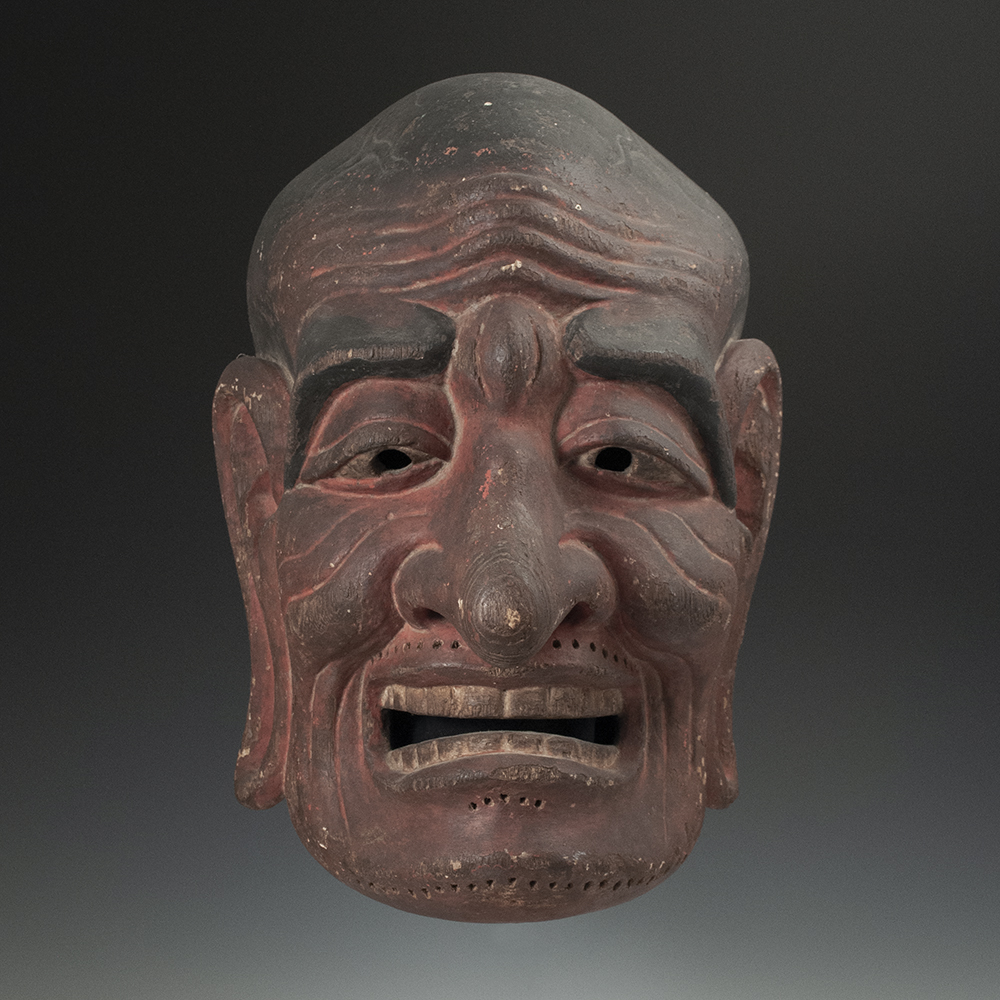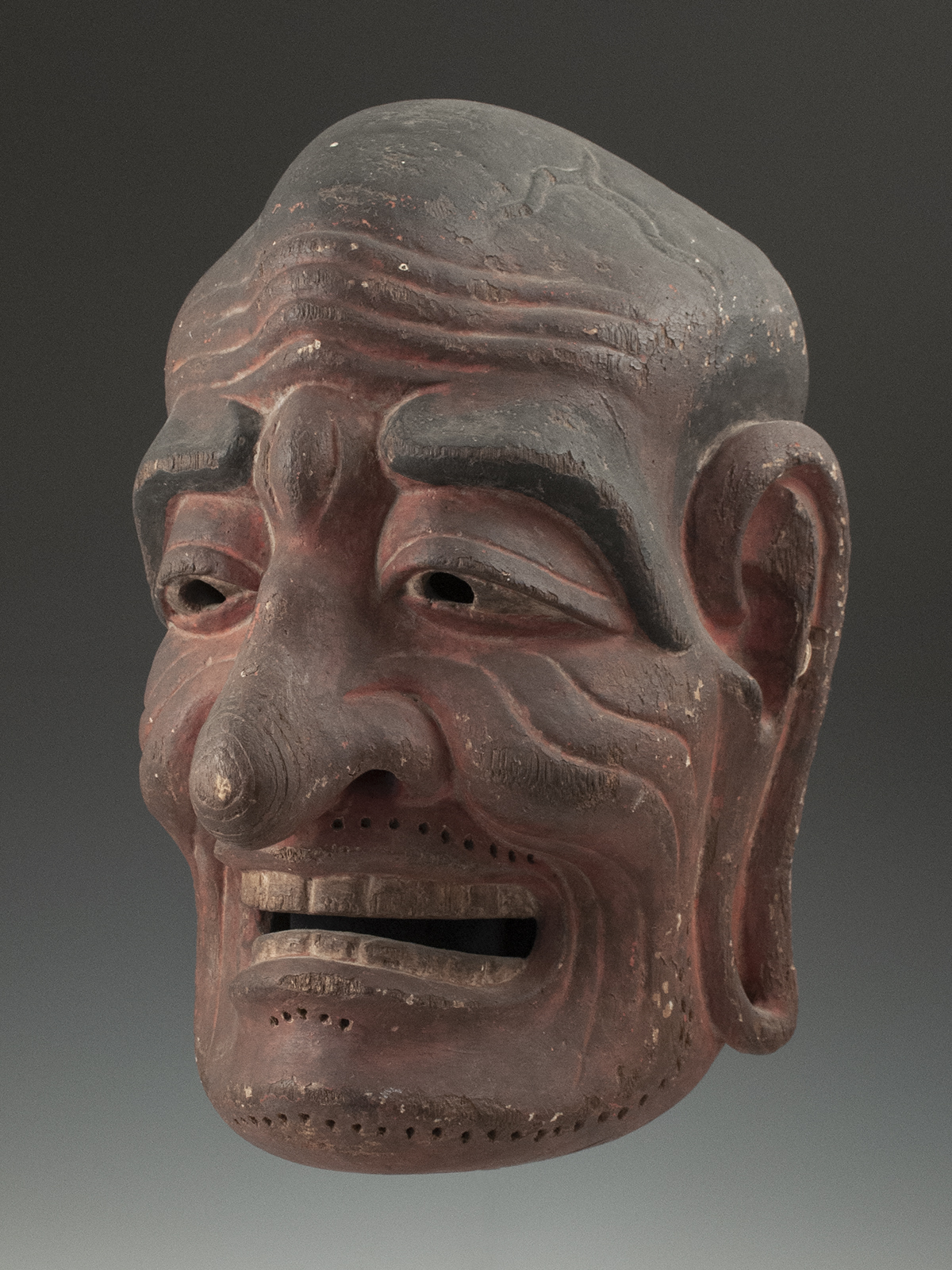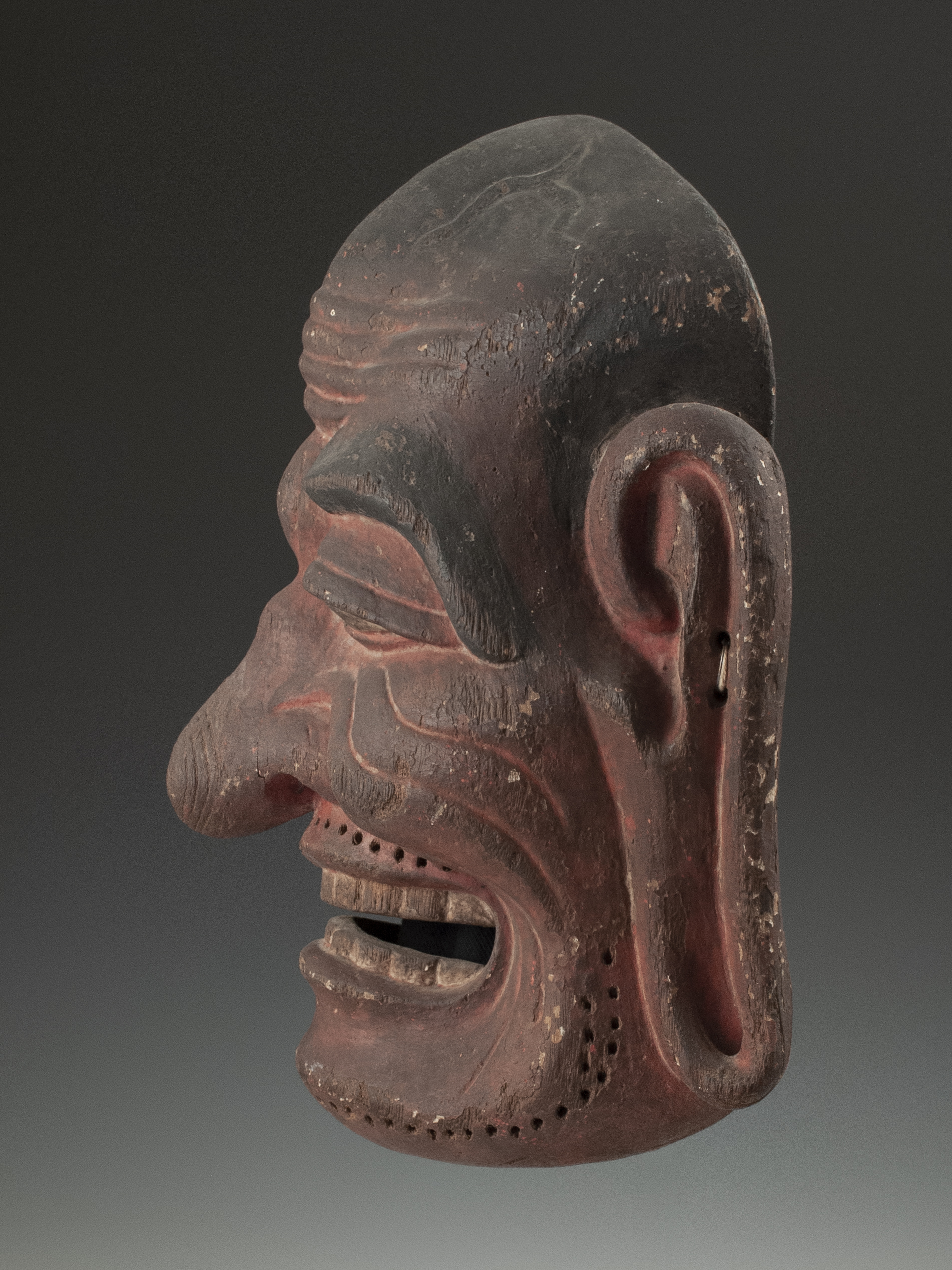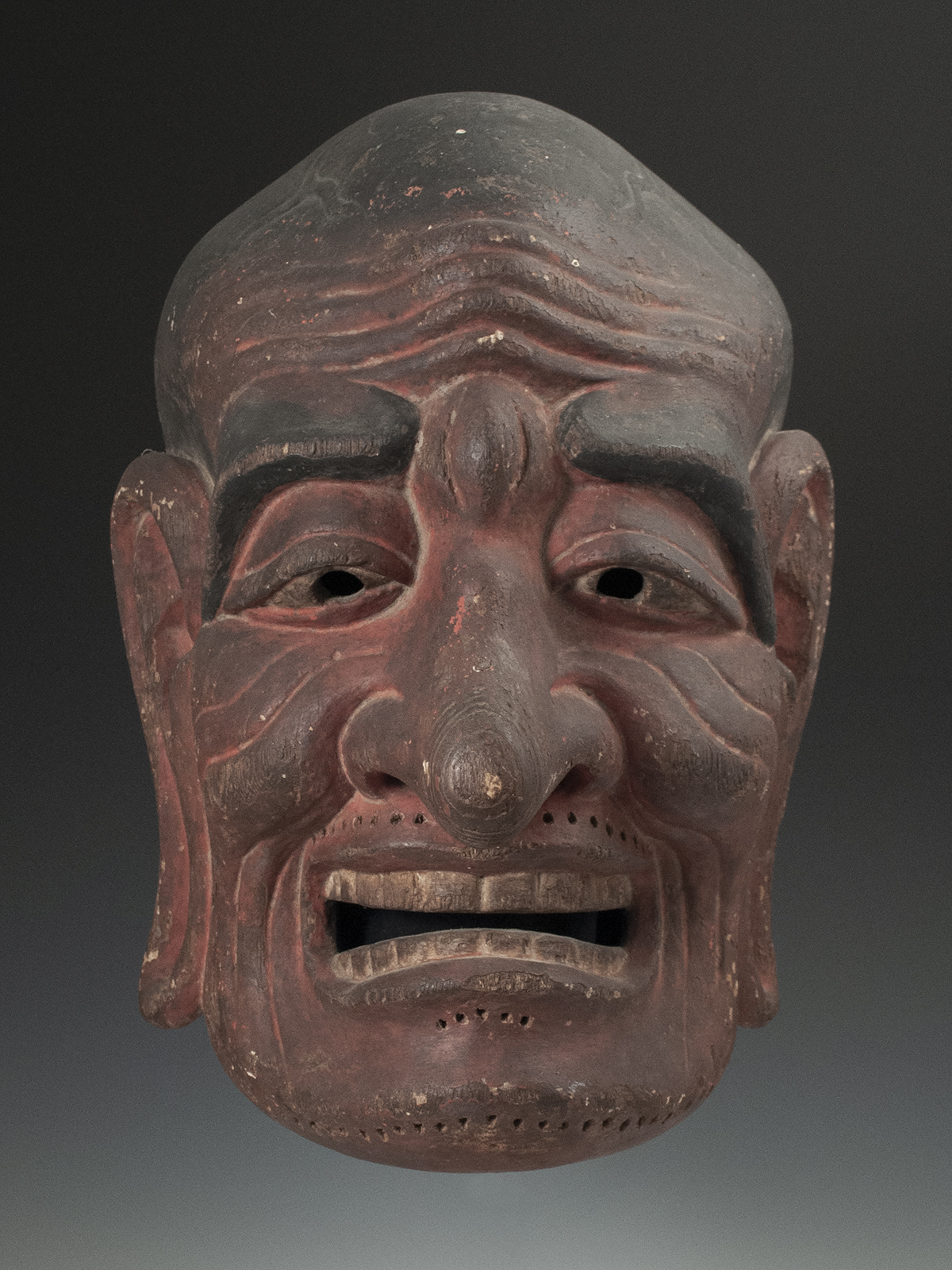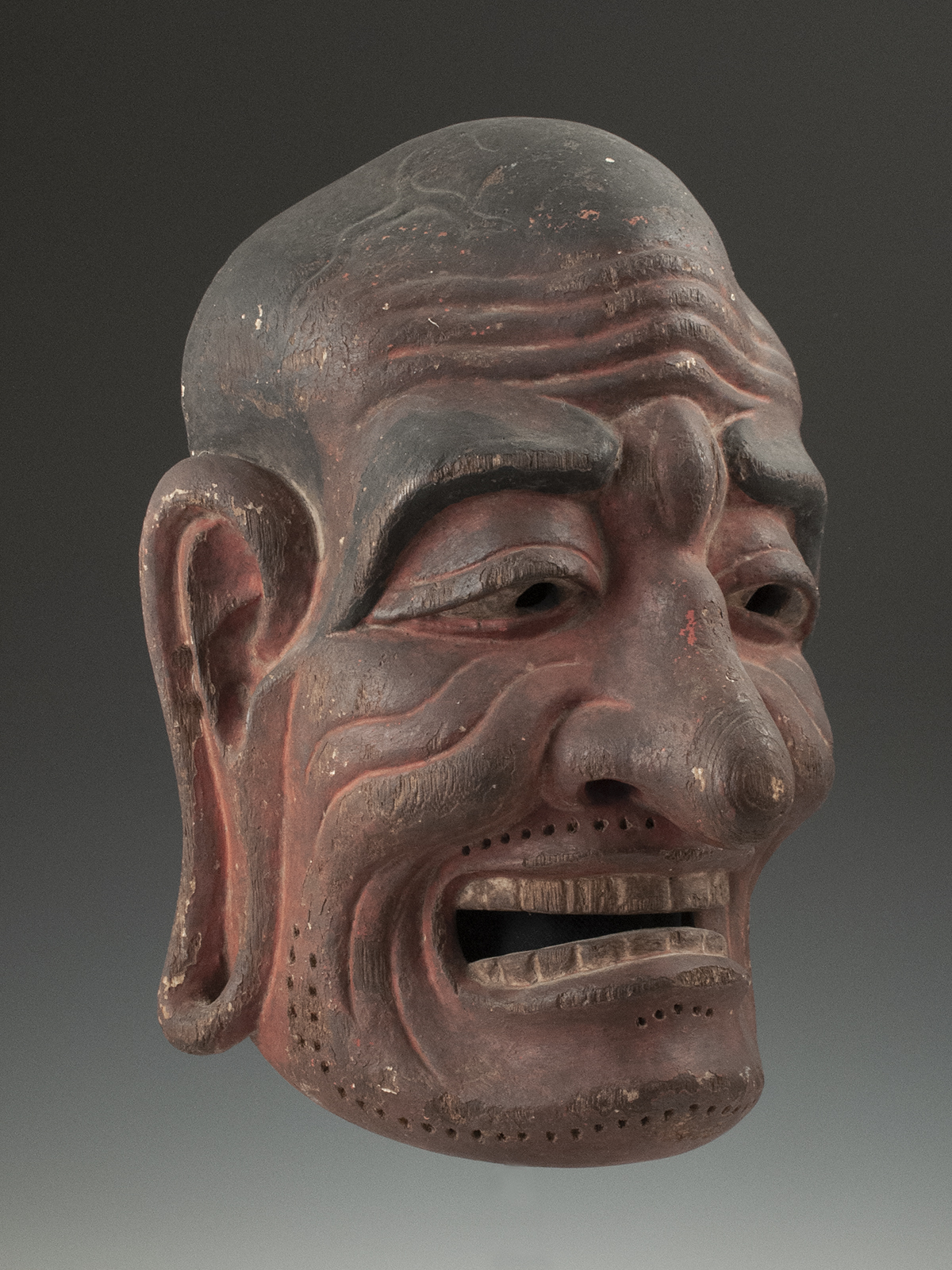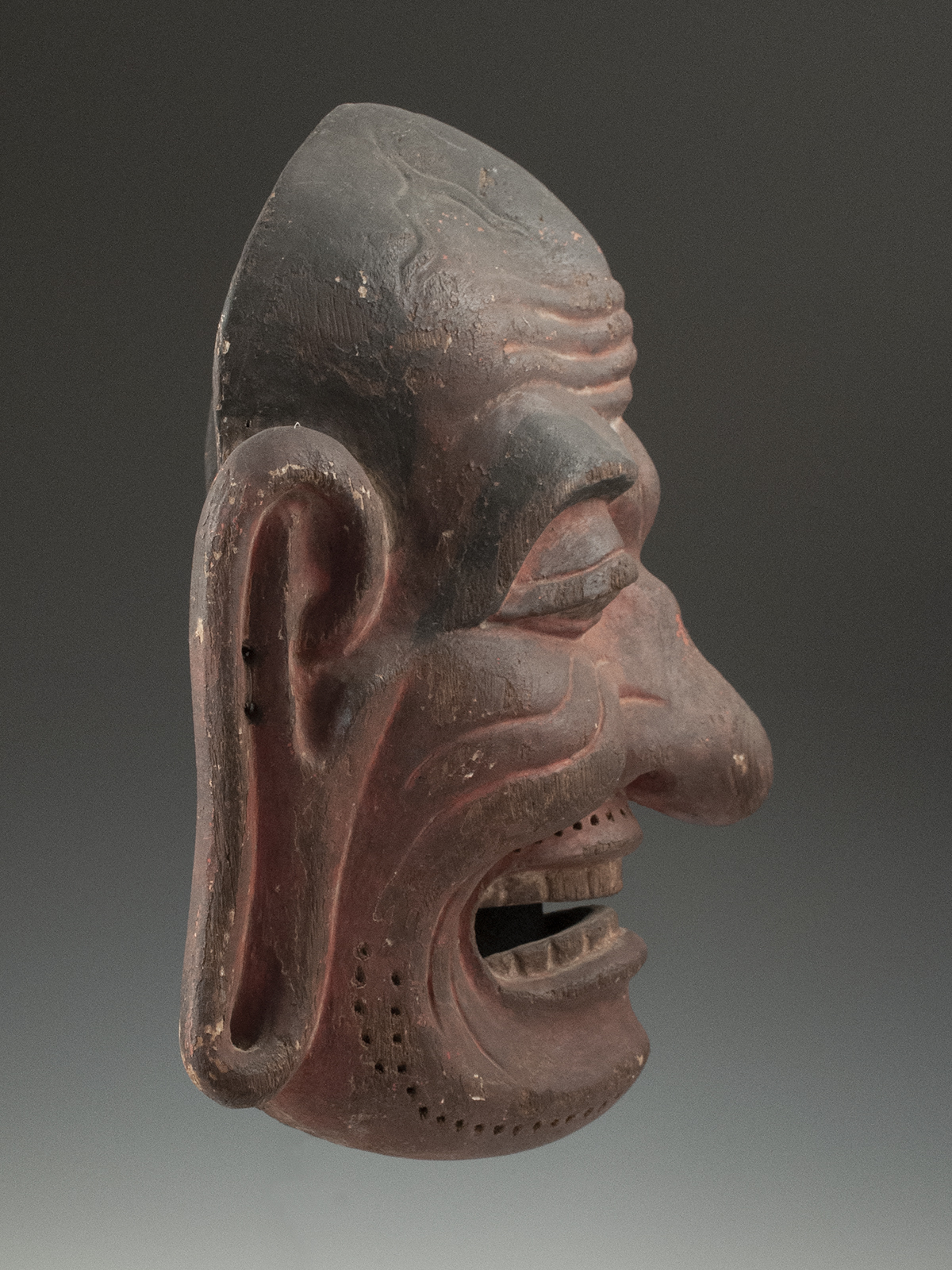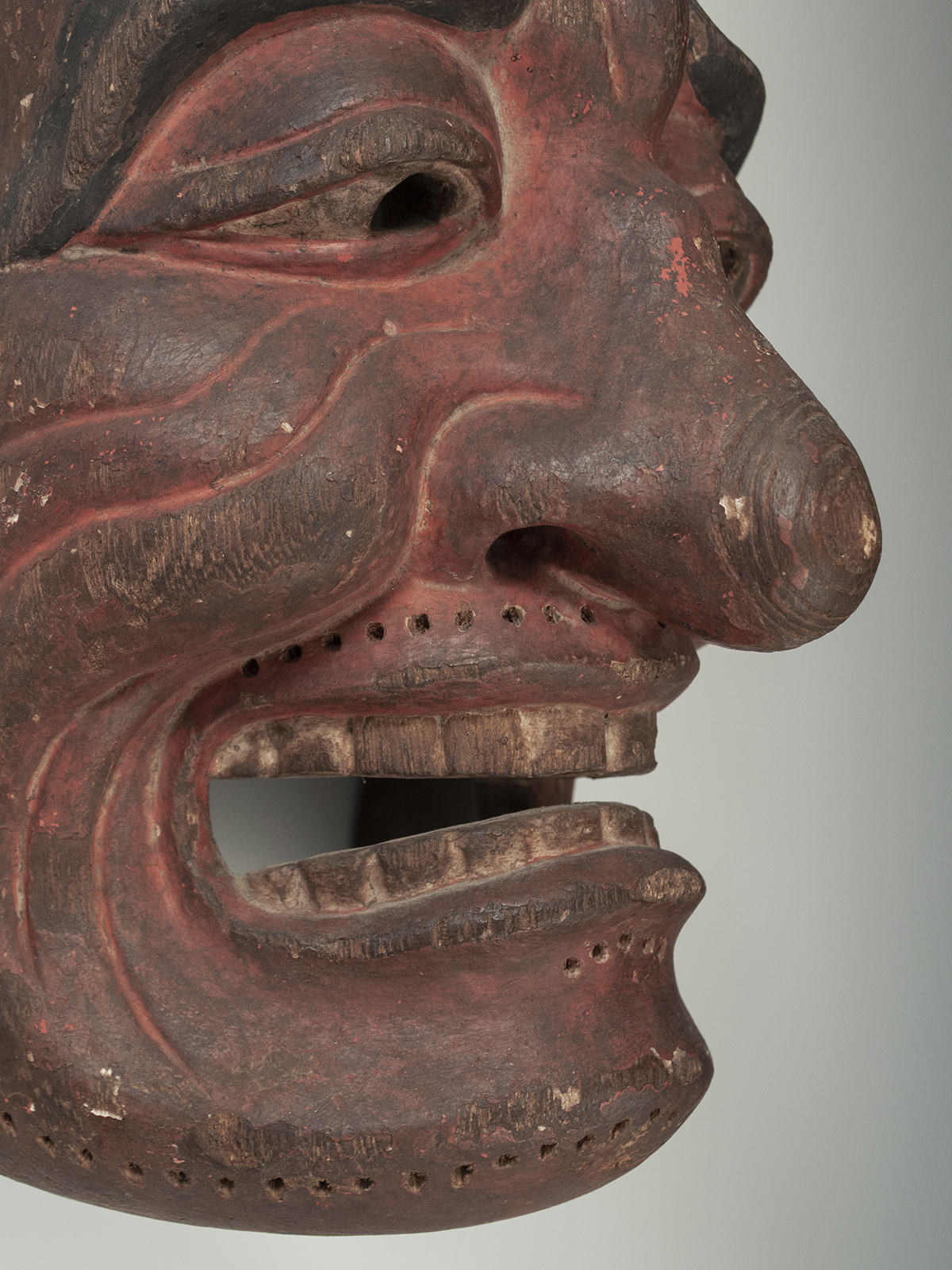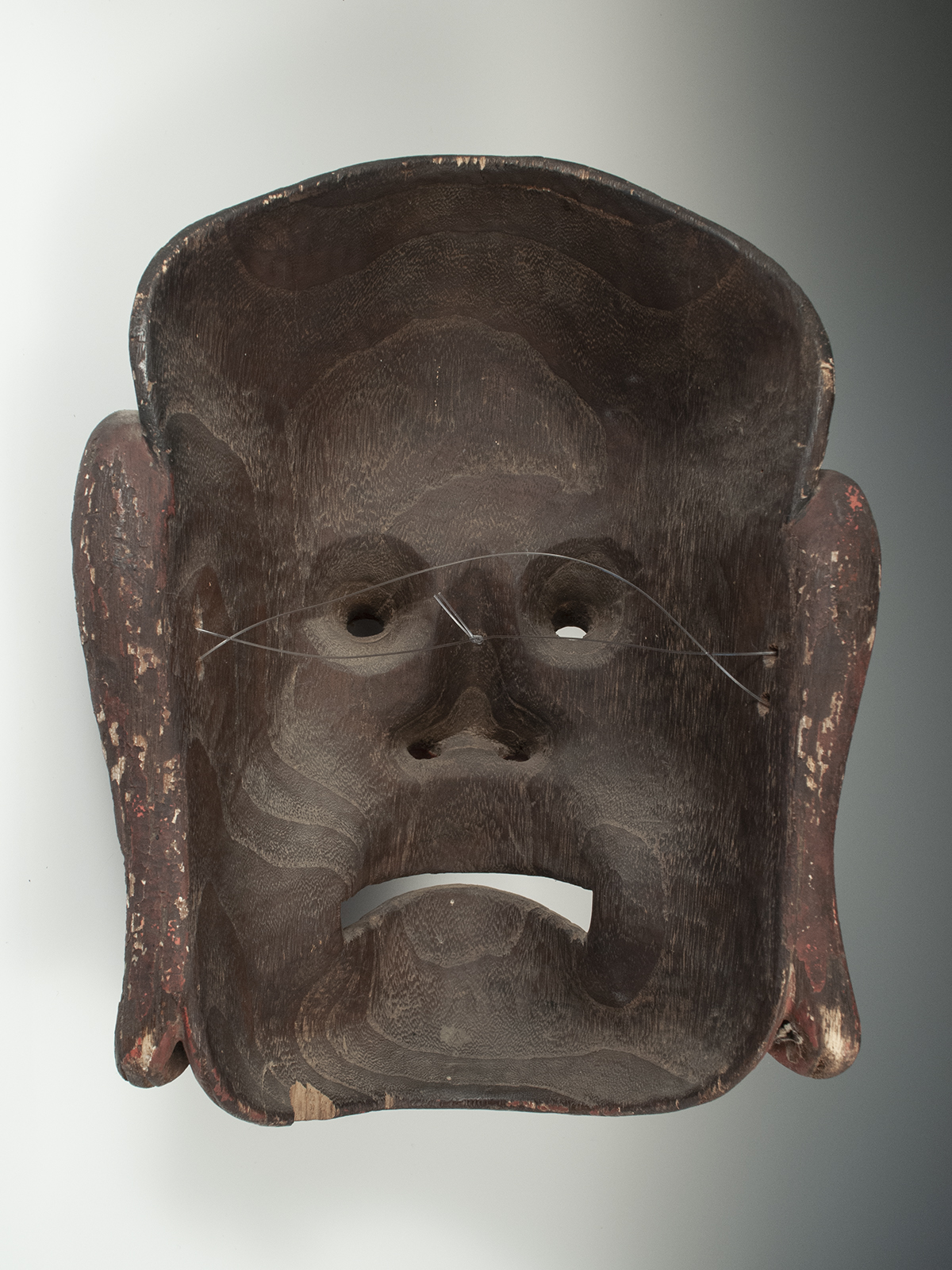Shrine mask
Japan
Cypress wood, pigment
12″ (30.5 cm) high by 8.75″ (22 cm) wide
19th century or earlier, most likely 18th or 17th century
Ex Collection of Charles Smith, University of Washington
From around the late 13th century until the present day, shrine masks were made and used in shrine festival (matsuri) activities, for many different reasons, such as to expel evil spirits, plagues or illnesses, to protect agriculture, and in general to promote safety, secure fecundity and to protect the villages and towns from all unpleasant happenings. These shrine masks were not for entertainment or theater, but were to bring the kami or spirits down from the heavens and ask for their help. The people march the masqueraders around, feed them, show them a good time, and then send the spirits of these masks back up to the heavens (no one wants any spirits hanging around, good or bad). What is unique about shrine masks more than any other type of Japanese mask is that while they have general names such as Oni (demon), old men, dragon, etc. they do not follow a strict iconography and these masks are totally individualistic created by the many artists that carved them. Finding two or more shrine masks that look relatively similar or almost identical is extremely rare and they are always Shinto in use. (Courtesy of Jerry Solomon)
$3500

